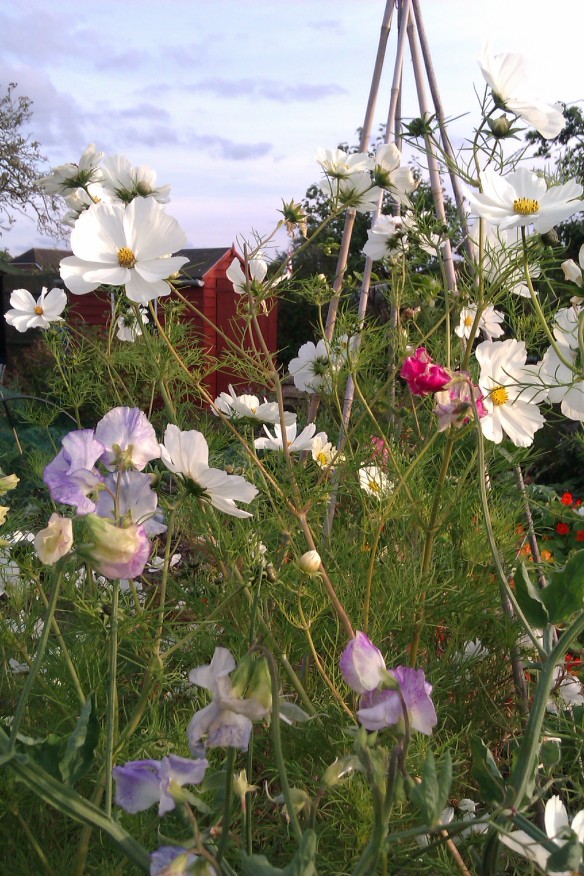 Crimson knobs emerge. Then pale, crinkled leaves slowly unfurl. Cherry-red stalks begin to elongate. The rhubarb is on the march!
Crimson knobs emerge. Then pale, crinkled leaves slowly unfurl. Cherry-red stalks begin to elongate. The rhubarb is on the march!
Last year I divided the one clump we had (acquired originally as a give-away left on a street corner) into three or four sections, discarding the dead fibrous center. I feed each with a nice helping of manure and, reinvigorated, the plants responded with a burst of growth. Rhubarb loves nutrient-rich soil, the richer the better. It’s no surprise that the new plant that has come on the most is the one planted next to the compost heap.
This year I may employ an upturned, black plastic garbage can to plunge one of these rhubarb clusters into artificial darkness. Deprived of light, the stalks will grow tall (seeking the sun) but remain rosily pink and tender. The leaves, unable to photosynthesize, will remain pale yellow and wrinkled. In this manner, I will produce “forced rhubarb” – a delicacy prized in the late winter months. After this early harvest, the bucket is taken off and the plant suffers no lasting effects, though it must not be forced again for several years.
Have you ever eaten poached rhubarb (roasted in the oven with a scattering of vanilla sugar and some freshly squeezed orange juice)? Sweet and tender and stunningly ruby-red.




































